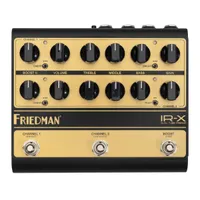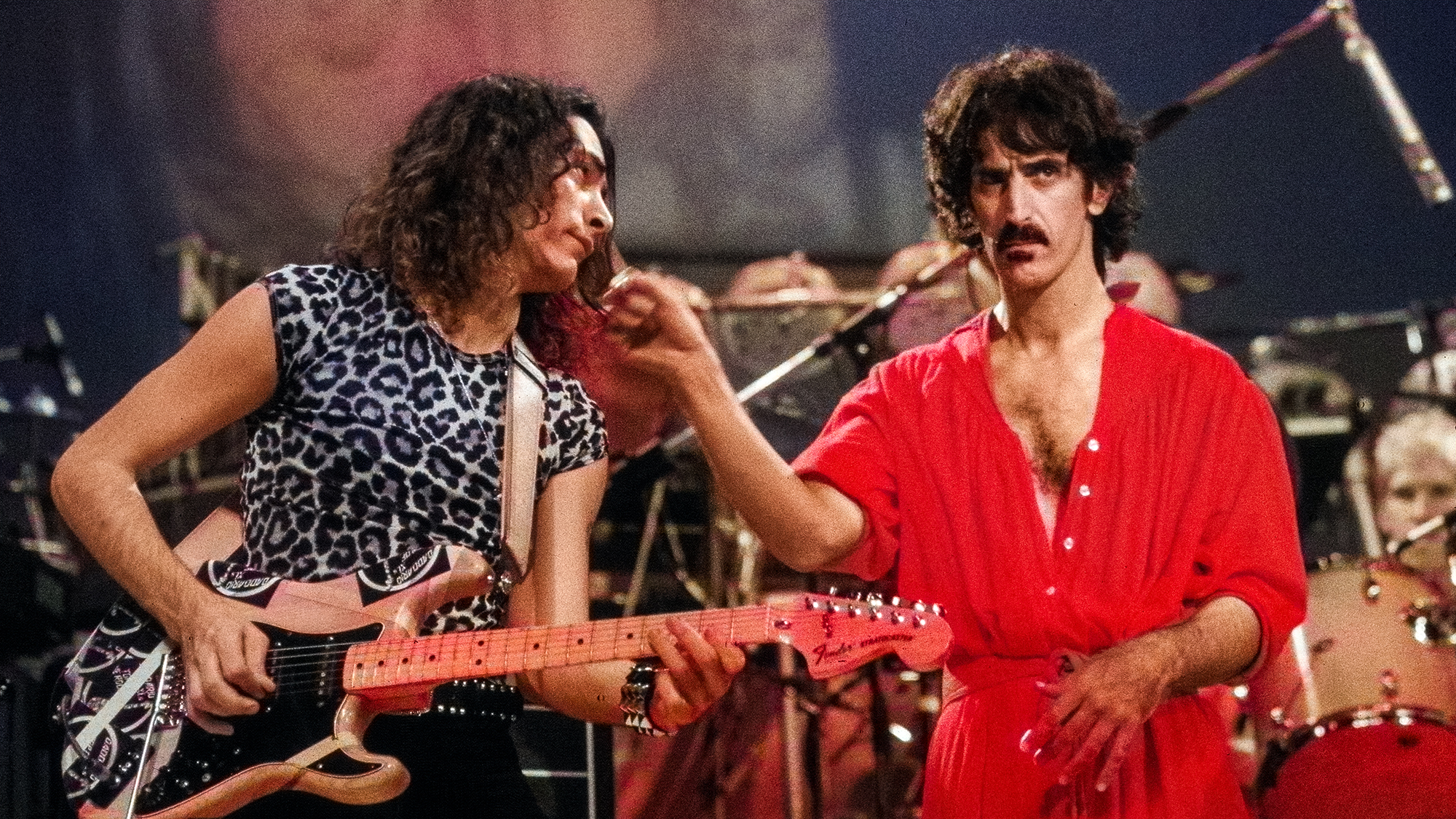Best pedal amps 2025: Power up your pedalboard with an amp simulator pedal
Save on visits to the chiropractor with my pick of the best amp modeling pedals
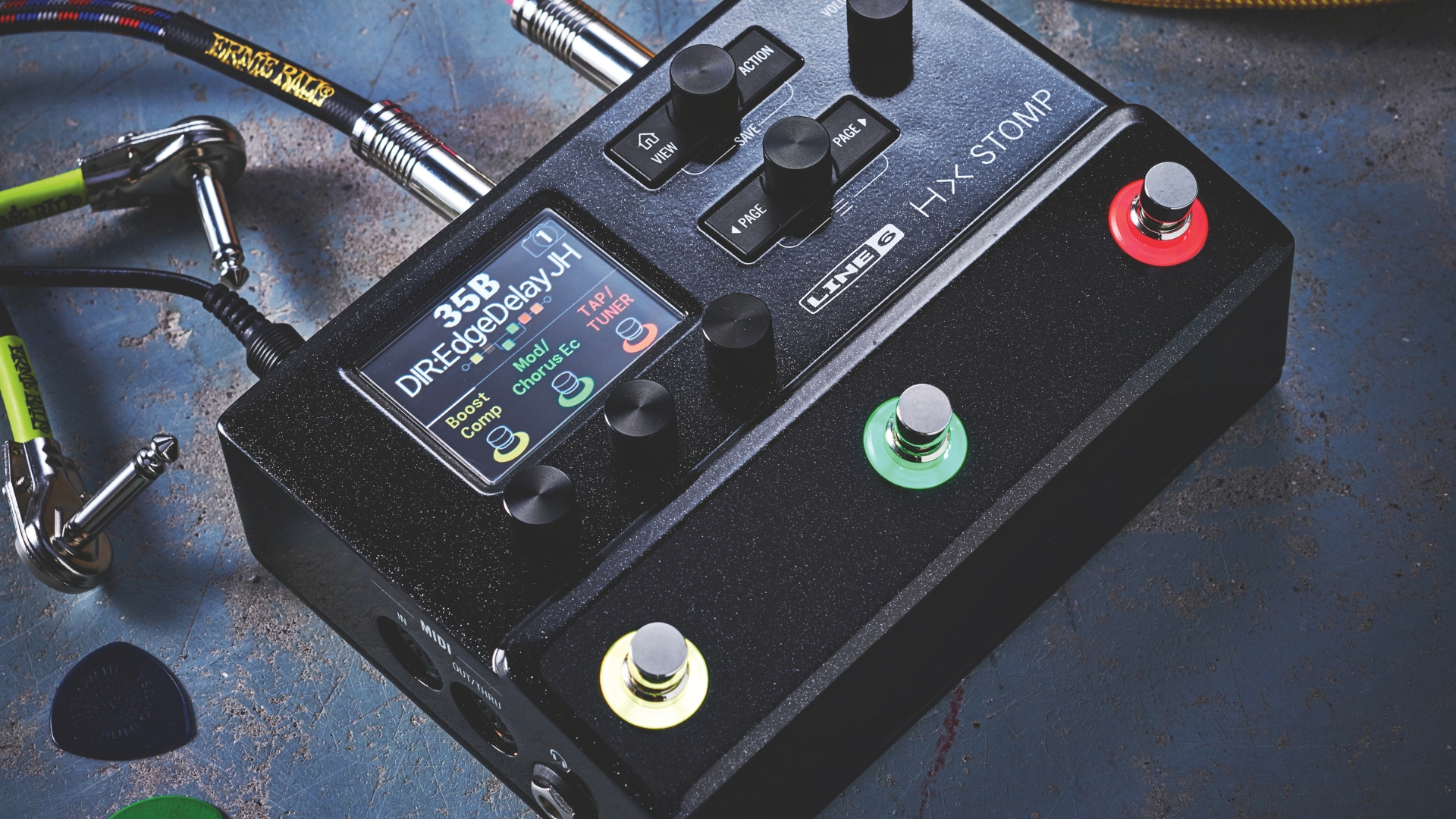
Amplifiers are, a lot of the time, big, loud, and heavy things – factors that can each present their own issues to you as a guitarist today. You might be in love with the chime-y cleans of a Fender Twin Reverb, but that love doesn’t make it any easier to lift said Twin up three flights of stairs to your next load-in. Luckily, technology has shown us another way with the best pedal amps.
Previously, amp simulator pedals have gotten flak for lackluster tone and overreliance on hokey digital emulations – but today’s pedal amps are a world apart from those early iterations. I've been using pedal amps for many years now and my main one serves as a handy home practice tool, whilst also being a reliable emergency backup for my tube amp when gigging.
I've tested, used, and reviewed a huge array of amp modeling pedals, and I know from first-hand experience it can be a little intimidating ditching your traditional amp for one, let alone rocking up to a gig with just your pedalboard and guitar. The benefits are real though, from getting the same tone every night to saving you time, effort, and money getting to shows and setting up.
My favorite pedal amp is the Line 6 HX Stomp, which is what I use on my own 'board. It can replace your rig entirely, or just augment one section of it, and fits in just as easily on a touring rig as it does in a home studio setting. It is pricey though, so if you're after something a little less costly, have a look at the IK Multimedia Tonex One which is insanely good value for money.
Artists like John Mayer, U2, Jimmy Eat World, and many more are already ditching their amps in favor of pedal amps and rack-mounted units, so there's no reason you can't take the plunge either. If you've got more questions about pedal amps then head down to our how to choose section, which features loads of useful info that will get you on the right track.
My top picks

I've been using the HX Stomp for years now and in my opinion, it's amongst the best out there. With an intuitive design, featuring a particularly clever, compact layout, it doesn’t take up much space but delivers in every setting: live, in the studio, or at home.
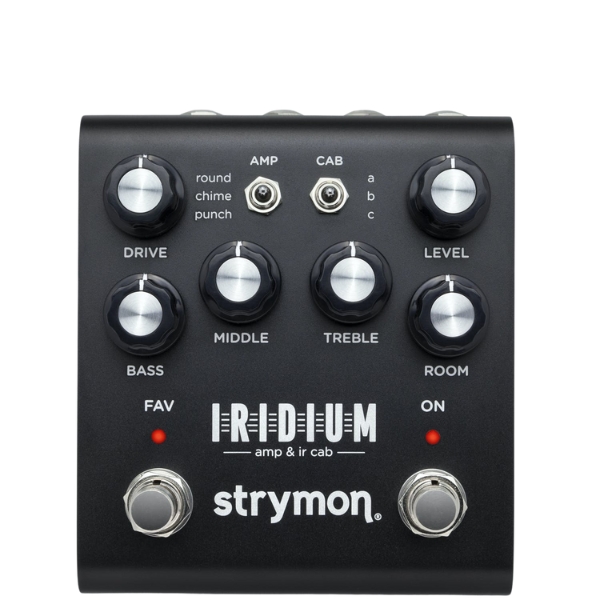
The Strymon Iridium has been around for a while, but its staying power is proof of just how good it is. Its brilliance is in its simplicity, with three classic amp tones at its core and a compact and easy-to-use format. My top pick for beginners.
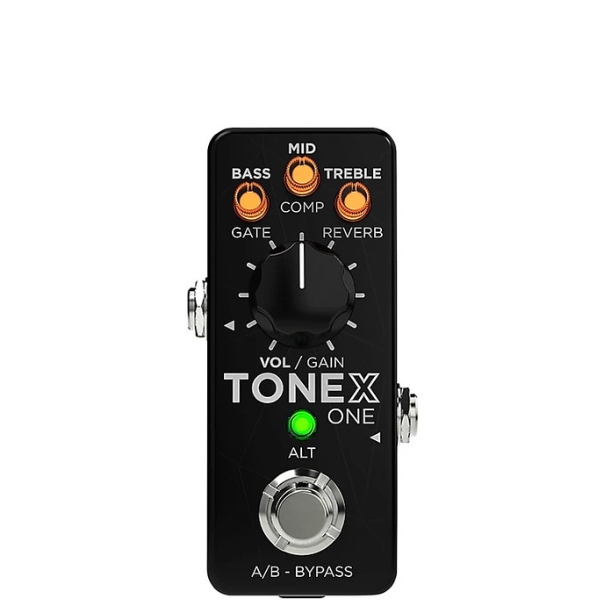
For realistic amp tones on a budget, the IK Multimedia Tonex One would be my choice. Small enough to fit on the vast majority of pedalboards, yet powerful enough to sound like a full-blown Mesa stack, this AI-powered mini pedal powerhouse is an absolute phenomenon.
Best overall

1. Line 6 HX Stomp
Our expert review:
Specifications
Reasons to buy
Reasons to avoid
✅ Buy if you want a pedal amp with loads of features: It might be small, but the HX Stomp is jam-packed with features and can play a huge array of roles from full rig replacement to audio interface to multi-effects pedal.
❌ Avoid if you prefer simplicity: There's a lot of depth here, so if you're looking for something that's a little more plug-and-play there are simpler options available, like the Strymon Iridium.
If you need a jack-of-all-trades pedal amp, the Line 6 HX Stomp can do pretty much anything. Whether you want a simple clean amp sim to run all your pedals into, or hook it up as a full-on ampless rig, it’s a brilliant choice for any kind of guitar player.
From classic Fender cleans to roaring Mesa-style high gain, the HX Stomp can do it. The sound quality is simply astonishing and it even does edge-of-breakup-style sounds accurately. There are so many effects too, with every iconic stompbox you can think of represented, as well as some more esoteric choices like synth pedals and ring modulators.
Having owned an HX Stomp for a few years now, I’ve been most impressed with its flexibility in both use and connectivity. You can use it as a full-on audio interface at home, slot into an existing rig with an amp to handle time-based and modulation effects duties, or just as a take-anywhere travel rig. Stereo ins and outs plus MIDI and an expression connection mean it will fit into any guitar player’s set-up.
Best for beginners
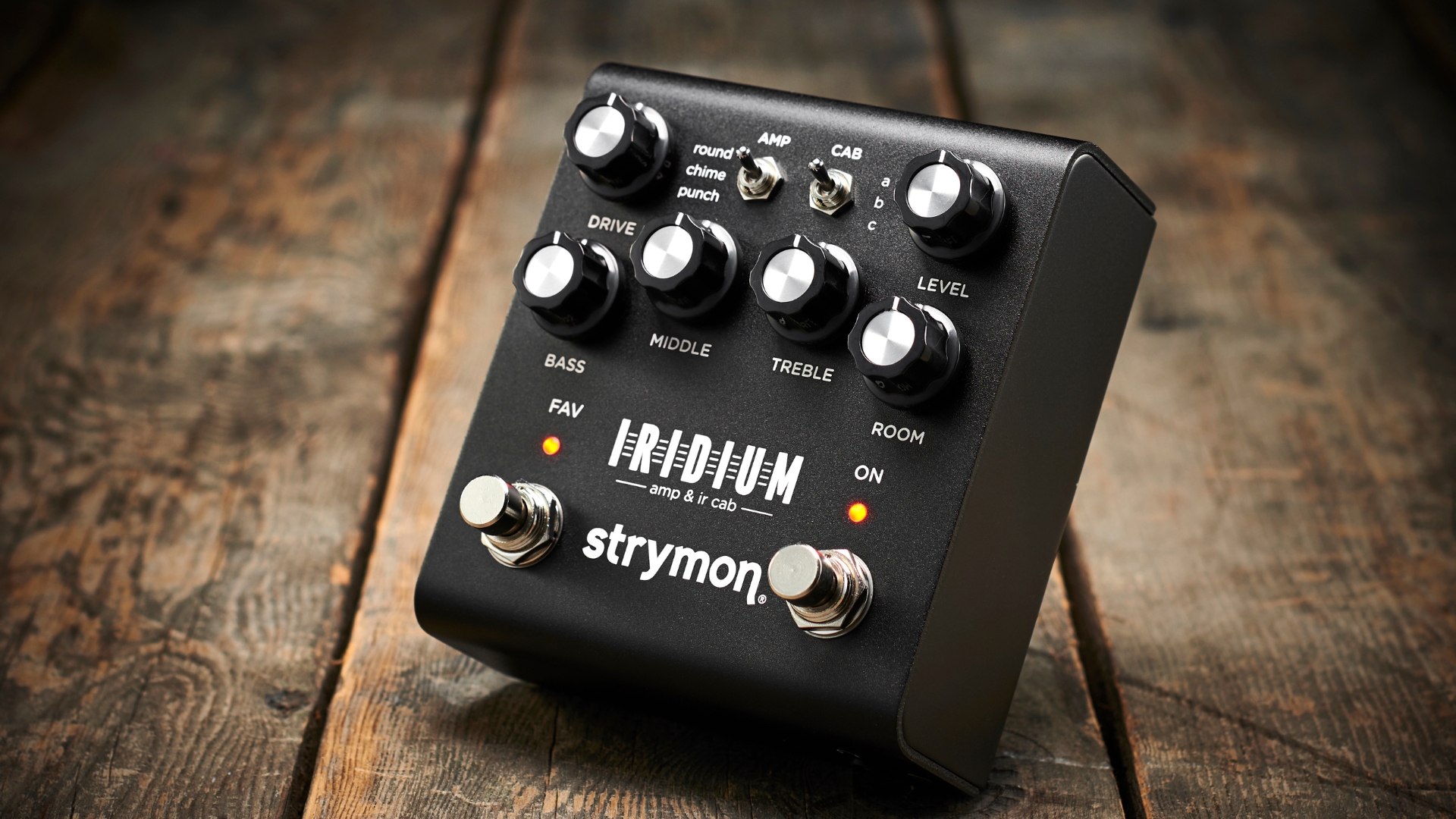
Specifications
Reasons to buy
Reasons to avoid
✅ Buy if you want an easy-to-use pedal amp: With three amp models and a single effect, the Strymon Iridium is perfect if you just want an easy-to-use straight replacement for your amplifier.
❌ Avoid if you need flexibility: This is a pure amp simulator at heart, so if you're looking for something to play a lot of different roles, you'd be better off with the HX Stomp.
The ever-present Strymon Iridium is one of the most popular pedal amps ever made. Its ease of use combined with top-tier tone make it a popular choice for players who want to record at home or play live without lugging their amp around with them.
There are three amp models on the Strymon Iridium, with Fender-type, Vox-type, and Marshall-style emulations that cover all the bases when it comes to classic tones. The Fender type goes from clean to Tweed with ease, whilst the Vox imitation has all the classic chime of the original. Finally, the Marshall emulation delivers a punchy Plexi-style tone that will please many a classic rock lover.
One of the best things about the Strymon Iridium is its lack of screens and menu diving. Everything you need is on the front face of the pedal, so you can tweak it in real-time without the use of a computer. If you are more tech-minded you can load your own impulse responses, and utilizing MIDI opens up options for 300 presets.

"Overall, I found an awful lot to like about this small box of wonders. First and foremost, the three amp models sounded enjoyably realistic, proving an excellent foundation for anything that the majority of pedal-centric rigs is likely to need to create."
Read more: Strymon Iridium review
Best budget
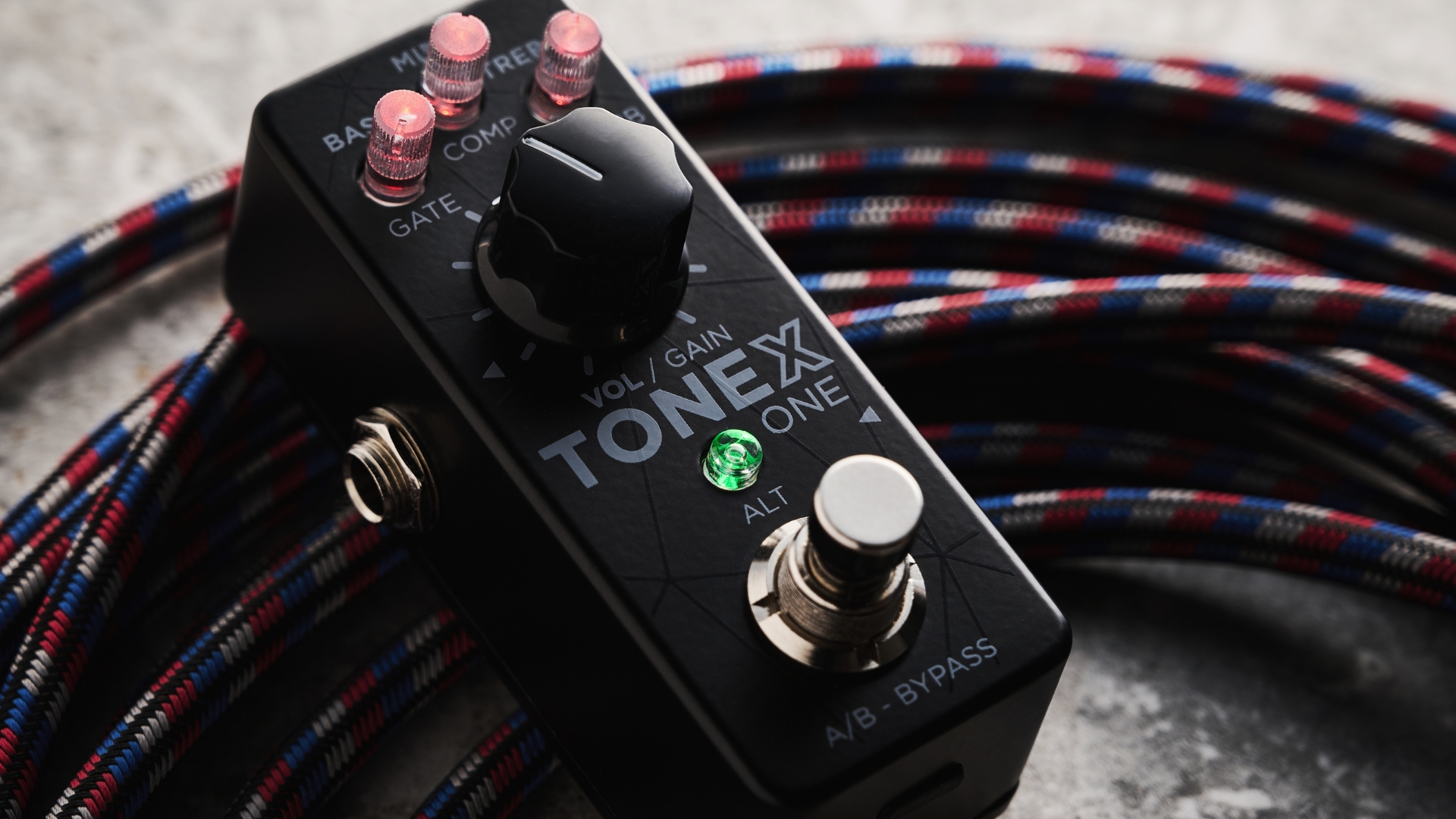
3. IK Multimedia Tonex One
Our expert review:
Specifications
Reasons to buy
Reasons to avoid
✅ Buy if you want great quality amp tones on a budget: The IK Multimedia Tonex One can usually be found below the $200 mark, making it an excellent value-for-money option for those on a budget.
❌ Avoid if you like getting hands-on: Most of the functions here are hidden behind fiddly sub-menus, so it's best to set it up with the companion app before you place it on your 'board.
IK Multimedia’s Tonex pedals are state-of-the-art, AI-powered pedal amps, and the Tonex One is their smallest offering; but smaller doesn’t mean less. With 200 amp tone models as standard and access to over 25,000 models to choose from on the Tonex library, if sheer number of amp options is what you’re looking for, this is a pedal you should consider.
Given its diminutive size and, therefore, lack of built-in knobs and control, to get the very best out of the Tonex One you will need to plug into your computer and use the Tonex SE software – the light version of the full-fat Tonex software – which is pretty simple and intuitive. However, those who just want to plug into a standalone pedal and instantly achieve their desired amp tones may not be sold on Tonex One.
Not all of its features are via the Tonex SE software; an onboard tuner, noise gate, EQ, compressor, plus 5 stereo reverbs, complete the pedal’s internal offering. Combined with the huge bank of tone models available, this makes a case for the Tonex One offering the most features and power per square inch of any pedal in its class.
Best for gigging
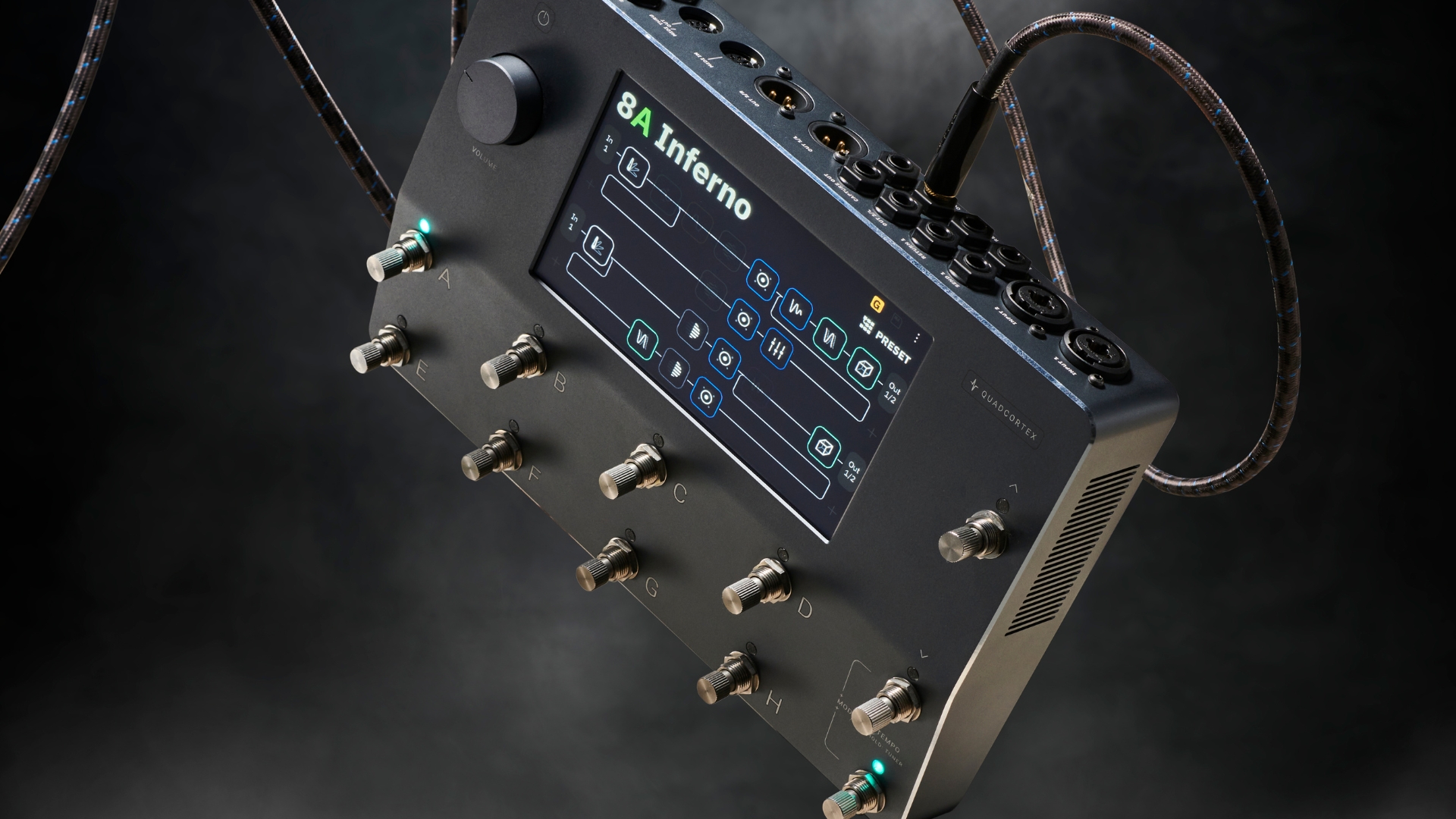
Specifications
Reasons to buy
Reasons to avoid
✅ Buy if you want a pedal amp for gigging: Recently used by John Mayer, the QC is super easy to use but offers loads of depth, so if you're looking for a gigging workhorse this is the pedal amp for you.
❌ Avoid if you're on a budget: This is a pretty expensive bit of kit, so if your budget is tight I suggest you look at the IK Multimedia Tonex One.
It’s one of the most highly regarded amp modelers ever made and a brilliant option for players who want to replace their entire rig or augment their existing pedalboard. The Neural DSP Quad Cortex has been an absolute phenomenon over the past few years and for good reason.
There are over 90 amp models, over 70 effects, and more than 1000 impulse responses, so you’re not likely to run out of tones any time soon. It can be used to capture your own amps, cabs, and pedals too, so the possibilities are pretty much endless. If you can think of a world-famous amplifier or pedal, chances are there’s a model here.
The large touch screen negates the need for buttons and rotary controls and, in a genius-level move, the stomp switches double as rotary controls. This means you can tap on the touch screen then adjust parameters using the footswitches, making editing on the fly nice and simple.
The one negative here is that there is still no desktop editing app, despite Neural DSP having promised one for some time, so for those who prefer to do their editing at the computer, you’ll still be waiting for this functionality.

"From any angle, the Quad Cortex is a clever, feature-packed, well-built, and great-sounding unit. What’s more, it’s truly fun and inspiring to play and easy to use. It promises to be a strong contender in this market, and earns an Editors’ Pick Award for its achievement."
Read more: Neural DSP Quad Cortex review
Best pedal platform
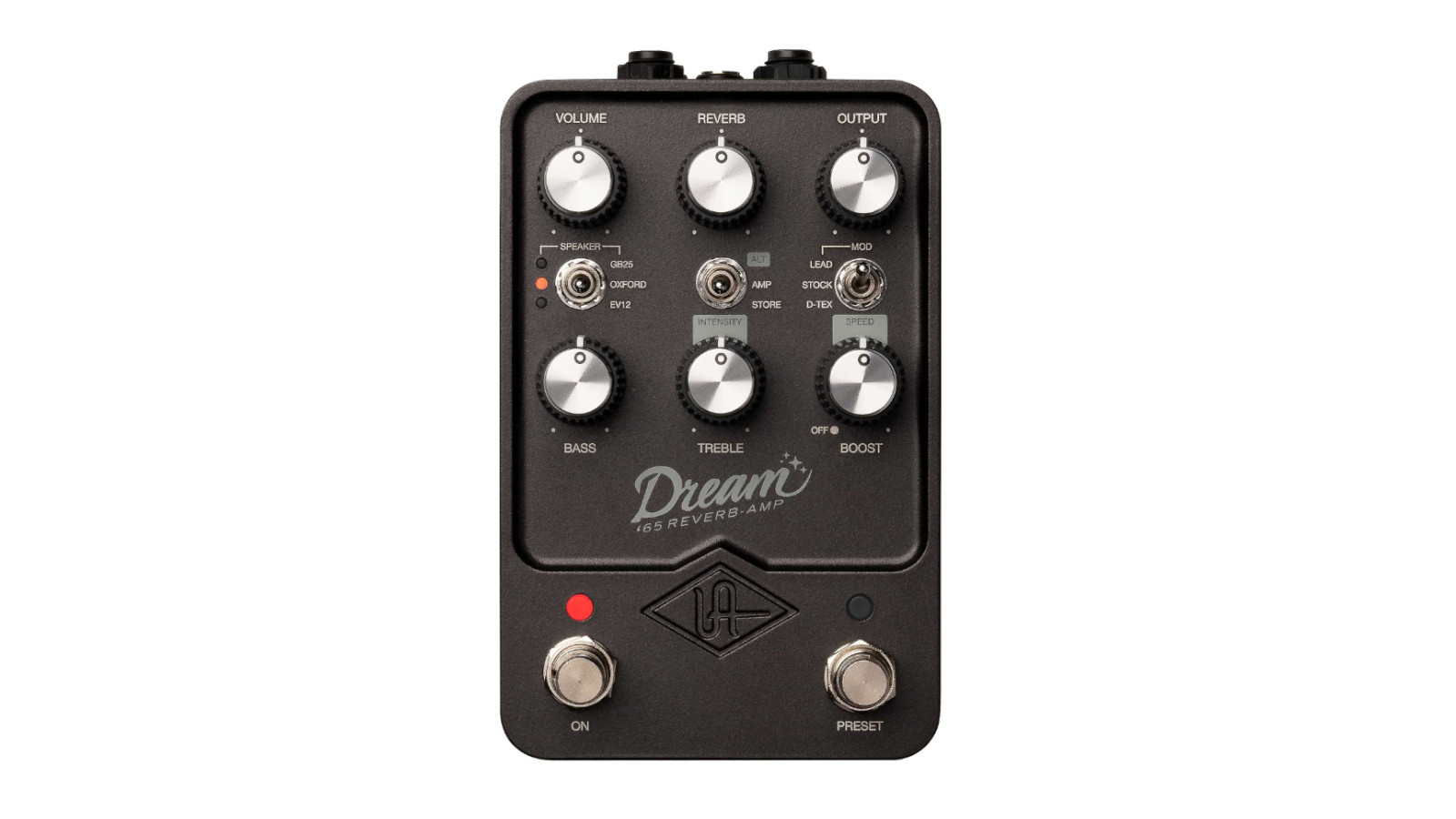
Specifications
Reasons to buy
Reasons to avoid
✅ Buy if you want a pedal amp that plays nice with external pedals: Based on the Fender Twin, the UA Dream '65 is a brilliant choice for the guitarist who has loads of pedals and wants a nice clean platform.
❌ Avoid if you want different tones: Featuring three variations of the same amplifier, this pedal amp is a little one-dimensional when it comes to base tone, so look elsewhere if you want lots of choice.
One of four amp emulators from UA, the Universal Audio Dream ‘65 is our personal favorite when it comes to these stompbox-sized pedal amps. Designed to work both in the studio and during live performances, this easy-to-use pedal amp is the perfect antidote if you’re not in AI or machine learning.
With glassy cleans and a scooped midrange, the Dream 65 sounds exactly how you’d expect a pedal based on a Fender classic to sound. It also responds like an amp too, with touch dynamics that are scarily close to the real thing. Turn things up and you still get that feel of a dimed amp, with its deliciously crunchy breakup.
The cab models are sublime and when you use the mobile app you get access to six overall. The standard cabs are all 1x12s but the extras offer you the use of two 2x12s and a 4x10. There’s an option to use your own impulse responses too. Of course, no Deluxe Reverb model would be complete without spring reverb and tremolo, which the Dream ‘65 emulates incredibly well.

"With pedal set clean in the Stock position, it was easy to get very realistic Fender Deluxe Reverb tones that sounded excellent, with lush reverb adding a beautiful wash of airiness."
Read more: Universal Audio Dream 65 review
Best for volume

6. Blackstar Amped 1
Our expert review:
Specifications
Reasons to buy
Reasons to avoid
✅ Buy if you want a pedal amp that can drive an external cab: If you're after volume, the Amped 1 can deliver 100-watts to your cab of choice, making it a great option for live players.
❌ Avoid if you need something compact: This is a pretty hefty bit of kit, so if you have a super busy pedalboard or need something lightweight, you should look elsewhere.
The Blackstar Amped 1 is a hugely versatile pedal amp that gives you a massive variety of tones to choose from. It’s a reassuringly rugged unit that will fit on your pedalboard, delivering a huge 100 watts of power that will handle even the biggest live shows.
We loved the range of tube responses from the defined low end of the KT88 to the punchy midrange of the EL84, and of course classics like the 6L6 Fender clean and EL34 Marshall-inspired roar. It delivers all of these sounds with a satisfying responsiveness and a voice switch that essentially allows you to triple your combinations with American. British and Flat voices.
You can use it with your 8 or 16 ohm cab of choice, or there’s a cab sim available if you want to go straight to front of house. A headphone output gives you a silent practice option, and there’s USB-C for recording or editing your tones. The accompanying Cab Rig software lets you set up your desired cab from a range of options, room EQs, and microphones, giving you plenty of flexibility for studio or stage.
Spec comparison
If you're struggling to decide between the pedal amps in this guide, I've put together this handy table which compares all their key specifications. Using this should help you narrow down which is the best choice for your particular setup.
Model | Amps | Effects | Inputs | Outputs | MIDI |
|---|---|---|---|---|---|
Line 6 HX Stomp | 72 | 192 | 2 | 2 | Yes |
Strymon Iridium | 3 | 1 | 1 | 3 | Yes |
IK Multimedia Tonex One | 200+ | 7 | 1 | 1 | No |
Neural DSP Quad Cortex | 90+ | 70+ | 2 | 4 | Yes |
Universal Audio Dream ‘65 | 3 | 2 | 2 | 2 | No |
Blackstar Amped 1 | 12 | 1 | 1 | 4 | Yes |
Also consider
For me, the amp simulator pedals above are what you should be spending your hard-earned cash on. I do appreciate that amp tone is quite a personal thing however, so if you didn't find what you were looking for, here are some more options for you to consider.
Friedman IR-X
1 amp | No effects | 1-in | 3-outs
The Friedman IR-X is a dual-tube, two-channel preamp-in-a-box, with the added benefit of an accomplished IR cab sim system at the end. It is a Swiss Army knife for your ‘board, enabling you to put some incredible analog color before your power amp of choice, DI out to the desk via a balanced output, or emulate your own ideal guitar rig via power amp simulation and one of 12 included Friedman impulse responses.
★★★★½
Read more: Friedman IR-X review
Universal Audio UAFX Enigmatic ’82 Overdrive Special
1 amp | No effects | 2-ins | 2-outs
Just as each Dumble was purpose-built for the guitarist that ordered one, so too can the Enigmatic be tweaked and twiddled to fit your own unique amp-drive wants. Those tweakings can be saved as presets and accessed via a proprietary app, which also gives you access to other signature tones with ease. This is near-infinitely cheaper than the cost of real Dumble – and for my money, as much Dumble as you could ever need.
★★★★☆
Read more: Universal Audio UAFX Enigmatic ’82 Overdrive Special review
Two Notes ReVolt
3 amps/channels | 4 effects | 1-in | 4-outs
Powered by a 12AX7 valve, the Two Notes ReVolt gives you three distinct amp sounds in one compact unit. Its all-analog amp circuitry makes it a great choice for players making their first foray into the world of pedal amps with the added bonus of being able to slot into your rig as a preamp.
★★★★☆
Read more: Two Notes ReVolt review
Orange Terror Stamp
1 amp | no effects | 1-in | 2-outs
The Orange Terror Stamp works as a two channel amp, so you can set each one at a particular volume and use it is a boost function. There’s only a single EQ knob which gives you an evenly balanced tone in the middle, with a mid boost when you turn to the left and a mid scoop when you turn to the right. Orange uses this single EQ knob on a few different amps and it works really well.
★★★★☆
Read more: Orange Terror Stamp review
Walrus Audio Mako ACS1
6 amps | 3 effects | 2-ins | 2-outs
Just like the Iridium you get three classic amp models with a Fender clean, Vox chime and Marshall crunch. Six cab models offer a variety of tonal options and you can also load your own impulse responses into it if you wish. The sounds are detailed and respond realistically, with a sparkly clean tone on the Fender and Vox settings, but we’d have liked a little more gain on the Marshall setting.
★★★★☆
TC Electronic AmpWorx JIMS 45
1 amp | No effects | 1-in | 3-outs
Based on the legendary ’60s Marshall JTM45 tube amp, the TC Electronic AmpWorx JIMS 45 delivers that classic British crunch delightfully. You can make it act as if you’ve jumped the two channels on it as well, by blending the normal and high knobs to sculpt your perfect sound. An additional preset switch also means you can save two of your favorite tones and switch between them.
★★★★☆
How to choose
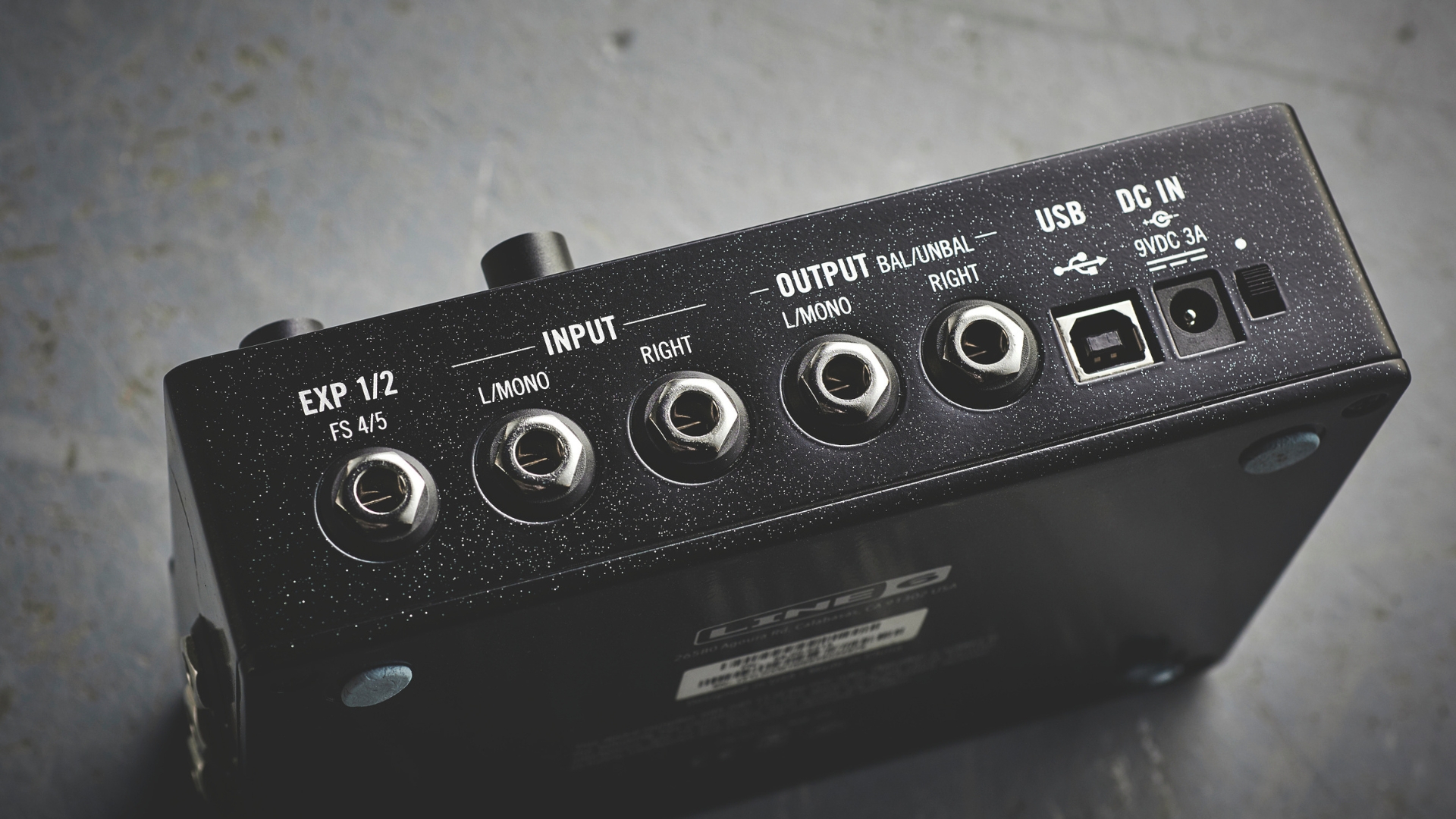
If you're not sure exactly what to look for in a pedal amp don't worry, I've been there and got the t-shirt. Deciding on a pedal amp is in many ways quite similar to buying a new amplifier in that it'll likely be the core of your tone, and thus a very important part of your rig that's worth doing your research on.
1. Amp tones
You can trust Guitar Player.
Chances are you want a pedal amp to replace an amplifier, so your first port of call is to think about what amp tones you like. Amp simulator pedals come in many forms, there are some that cover a wide range of tones where others model a single famous amp. Deciding between the two really depends on your personal preference and needs when it comes to tone.
If you have a favorite amplifier you're already using, then it makes a lot of sense to just pick up an amp modeling pedal that does one amp sound. Universal Audio's UAFX range are good for this, giving you a simple to use stompbox that recreates famous tones from the likes of Fender, Marshall, Vox, EVH, and many more.
If your amp is a rarer one, you might still be able to find it in a unit that does multiple amp tones like the Helix range or Neural DSP Quad Cortex. In these pedal amps you can find tones from the likes of Orange, Hiwatt, Matchless, Supro, Bogner, and many more, so if you're after a specific amp tone, they're both good places to start.
Of course there is a benefit from a multi-amp modeler for players who cover a lot of different styles or genres, or those who play in cover bands. A multi-amp simulator pedal can give you a lot of variety to pick from, without having to compromise on tone.
2. Effects
The next question you need to ask yourself is whether you need additional effects with your pedal amp. Most units will come with a reverb at the very least, but some don't even have that.
This might not be an issue if you're playing with a full pedalboard of effects, but if you don't have a massive selection already, or you fancy trying some new effects out, something like the HX Stomp or Quad Cortex could be a good shout.
3. Connectivity
How you're integrating your pedal amp into your existing setup is also something important to consider. If you've got loads of stereo effects you want to take advantage of, then an amp modeling pedal with stereo inputs is a must. Many pedal amps say they have only one input, but they can often be TRS inputs that require a special cable for stereo so do check this before you buy.
Similarly you might want to integrate MIDI into your 'board, whether you need lots of presets or you want to control the actions of other pedals and your amp modeling pedal seamlessly. Again many pedal amps feature MIDI, although it might come as a MIDI/TRS connector so have a look at the manual of your chosen pedal amp to confirm this before you buy.
4. Size
I've left this til last but it's actually a pretty big consideration. You want your chosen pedal amp to fit onto your pedalboard after all, so it's important to consider the size. Units like the Blackstar Amped 1 and Neural DSP Quad Cortex are pretty hefty and large, so you'll need a lot of space. Others like the HX Stomp and Tonex One are a lot smaller so can fit on a busier 'board.
FAQs
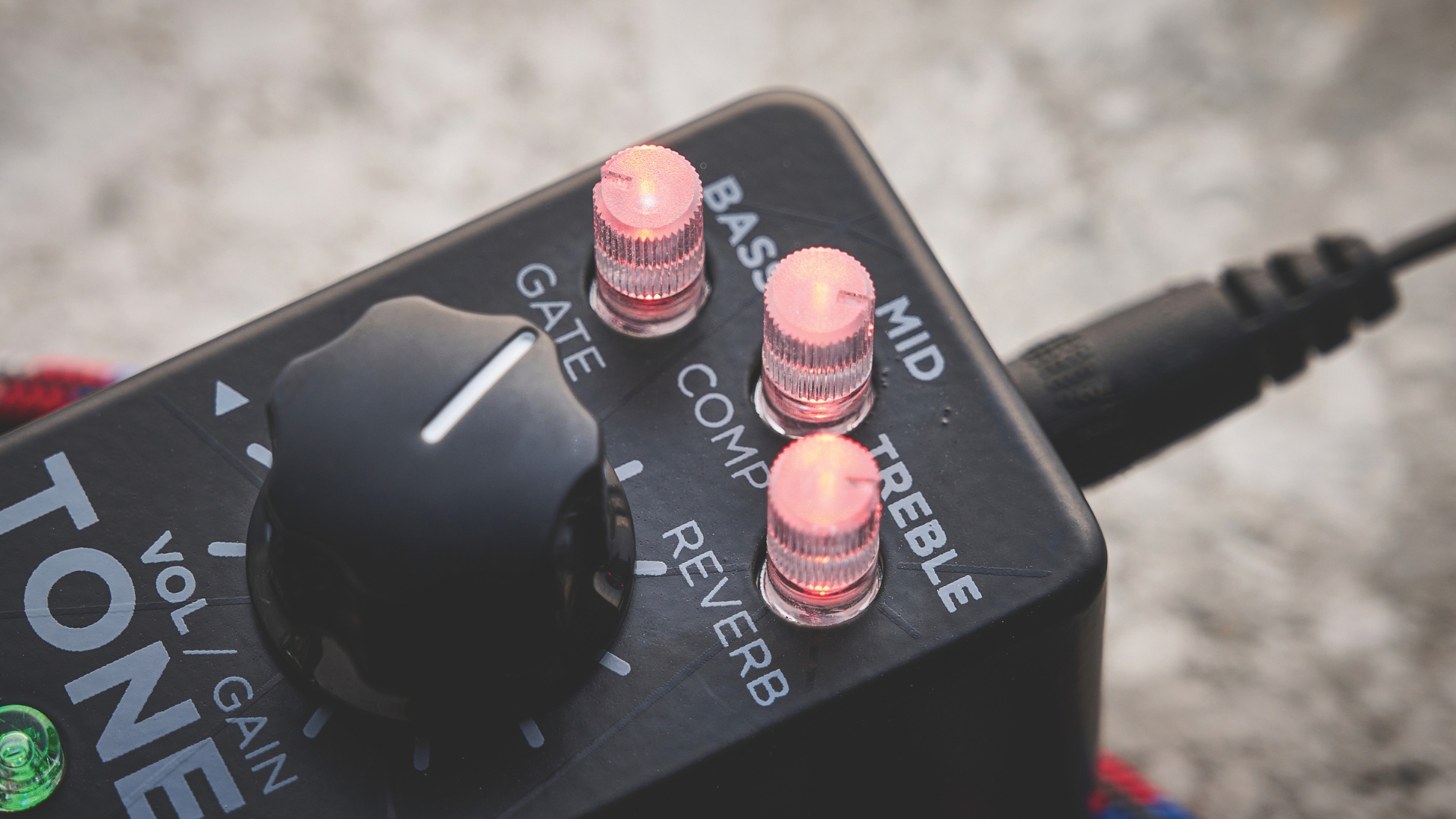
What is a pedal amp?
A pedal amp is fairly self-explanatory, really: it is amp tones in a pedalboard-friendly stompbox format. The category is broad though, encompassing a number of different pedal-borne possibilities.
Some, for instance, emulate the tonal characteristics of classic and iconic amplifiers – enabling you to access sounds you’d otherwise have to pay through the nose for. Others might use proprietary circuitry and digital smarts to create endlessly-customizable amp tones based on a wider pantheon of amps. Some may even simply be an amp in a box, preamp and power-amp section inclusive, so you can plug straight into a venue’s house cab without having to lug a heavy amp head along for the ride.
Different pedal amps have different practical utilities depending on your own wants and needs. The Universal Audio UAFX Enigmatic ’82 Overdrive Special, for instance, is a highly economical way to get unicorn-poop guitar tones in your arsenal, where the Orange Terror Stamp is a shrunk-down tube amp that’ll power your pedalboard handily by itself.
Of course, not every pedal amp is a power-slinging stage-ready beast capable of driving a cab by itself. If you want to use a pedal amp to eliminate the need for an amp in your guitar rig, there are many different ways to achieve that – including using good old DI boxes to send your outgoing amp-toned audio wherever you’d like.
Are pedal amps worth it?
Every use case is different, so whether a pedal amp is worth it for you will naturally depend on your own needs. Some are simply a cheap way to access expensive tone; others have practical features like balanced outputs or tone presets, that trivialize some of the more infuriating parts of capturing a tone in the studio or on stage. All are advantageous for being considerably lighter than even a small combo, as well as much less prone to breakage.
Pedal amps are still viewed askance by certain groups of guitarist – and sometimes for good reason. Early iterations of digital amp emulation technology were underwhelming to say the least, not to mention impractical; why use a bad-sounding digital version of the real thing? Besides, early-days small venues would often tend to use PA systems incapable of amplifying anything more than vocals – meaning guitarists needed the heft to back themselves up on-stage.
Today, though, a great deal has changed – and the reasons for disregarding pedal amps aren’t so good anymore. DI-ing instruments is more prevalent and useful than ever, even in small venues; digital emulation technology has also come on leaps and bounds. Coupled with IR cab-simulation tech, it’s now possible to have your dream amp-in-a-room tone come out of your pedalboard at line level, and near-indistinguishable from the real thing. Whether that’s worth it to you depends on a few things – including how much you love the smell of warm circuitry to how much you value your spine over the ‘real’ sound of your 80lb Twin Reverb.
Can you use pedals with a pedal amp?
In short, yes! You can absolutely use pedals with a pedal amp. For starters, it’s your signal chain and you can do what you want; your pedal amp is, functionally, another pedal in your chain. The best pedal amps, though, will have been designed to not just sound like a regular guitar amp, but also react like one, including how they interact with external pedals. Some are better than others at this and the very best will replicate tube amp breakup from overdrive pedals near-perfectly.
It must be said that not every pedal amp has an FX loop – so if you’re wanting to retain pristine time-based effects and modulation as you would via the four-cable method, then you’ll need to bear this in mind when looking to buy one. You could theoretically place the pedals after the loop-less pedal amp on your board; although this won’t have quite the same effect as using an FX loop, it's a good compromise if you don’t have one already built in.
Many pedal amps will have some effects built into them, though this can be limited to a small selection of reverbs. The most powerful pedal amps, such as the Neural DSP Quad Cortex will feature a huge amount of effects, meaning you can ditch your external pedals and use that exclusively – though, as it happens, the Quad Cortex also plays very well with external pedals.
Where does a pedal amp go in the pedal chain?
Where your pedal amp goes in your chain depends on a few things – but, for the most part, you should forget about the ‘pedal’ part and just consider it as an amp. After all, it’s theoretically replacing a conventional amp, one way or another! Some pedal amps need to be at the end of your chain anyway, particularly those with a power amp section and speaker output; this speaker-level signal is unsafe for anything but a speaker cab.
Of course, most pedal amps are emulators with guitar- or line-level outputs, which means they can go anywhere in your chain. You might have reasons to run pedals after the pedal amp, whether to keep your time-based effects clean, to use it as a preamp distortion or even to use it as a multi-effects unit – but for most players it’s best to have your pedal amp as the last thing in the signal chain, fulfilling the same role as a conventional amp tone-wise.
How we test
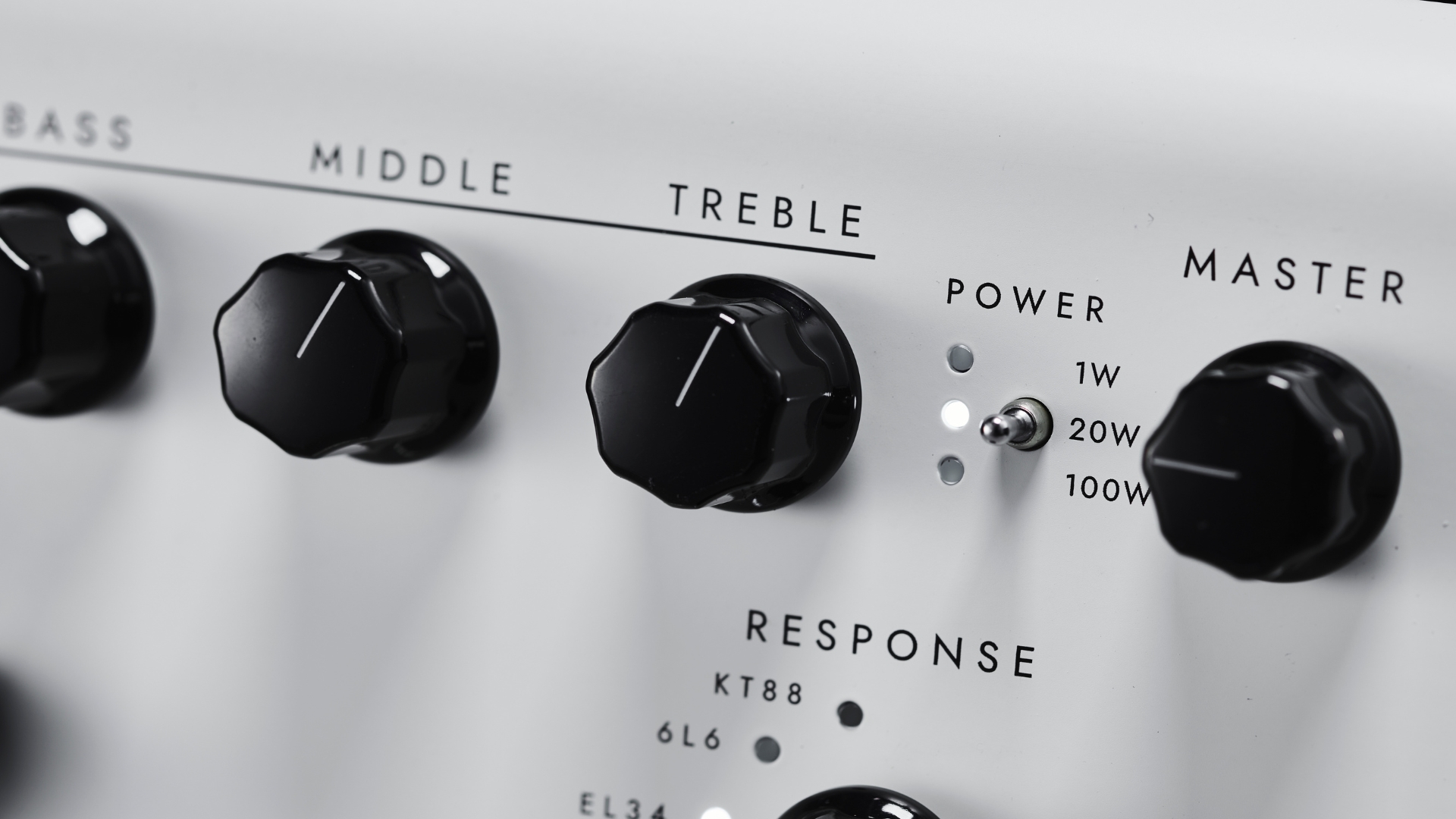
We've got loads of experience using both real and pedal amps here at Guitar Player, and when testing the latter we try and use it just as we would an actual guitar amp. Testing them this way allows us to judge its suitably for the task at hand, namely replacing your regular guitar rig.
When we first get our hands on a new pedal amp to test, we'll start by seeing how easy it is to get up and running. Plugging the inputs and outputs alongside the power supply, we're aiming to see if it's just as easy to use as a real amp, or whether you'll need to start menu diving to get your sounds. Ultimately a good pedal amp will be just as easy to use as the real thing, whilst simultaneously providing additional features a real amp cannot.
Speaking of features, once we've ascertained how easy it is to use, we'll move onto examine the extra features in detail. We'll look at how flexible it is when integrating into an existing setup. For example can you put your time based effects in an FX loop? Does it cater for stereo pedals already on your pedalboard? Things like how many presets you can use at any given time, how easy it is to dial in sounds on the physical controls, and what sort of offering any additional software gives you are all up for consideration.
Once the features have been studied in depth, we'll then move on to that most important of factors, the sound. Here we'll use our extensive knowledge of using real guitar amplifiers to see how the sound holds up. We'll test it through a variety of mediums too, including guitar cabinets, studio monitors, studio headphones, and PA systems to determine the overall quality.
Where possible, we'll endeavor to A/B versus the real guitar amp if we have one. Doing this gives us a great overview of how realistic the amp models are, thus informing how suitable they are to replace your real-life amp. We'll also spend a good amount of time using them, so we can see how they hold up over a period of time. Testing for a decent amount of time lets us live with pedal amp, so we can judge it once the initial honeymoon phase is over.
Read more on how we test gear and service at Guitar Player.
Related buyer's guides
- Best electric guitars: fine electrics for intermediate to pro players
- Plug in with one of the best guitar cables
- On a budget? Here's our list of the best electrics under $1000
- Freshen up your tone with the best electric guitar strings
- Want an affordable amp? Well, here are the best guitar amps under $1,000
All the latest guitar news, interviews, lessons, reviews, deals and more, direct to your inbox!

Matt is a Junior Deals Writer here at Guitar Player. He regularly tests and reviews music gear with a focus on guitars, amps, pedals, modelers, and pretty much anything else guitar-related. Matt worked in music retail for 5 years at Dawsons Music and Northwest Guitars and has written for many music sites including MusicRadar, Guitar World, Guitar.com, Ultimate Guitar, and Thomann’s t.blog. A regularly gigging guitarist with over 20 years of experience playing live, writing, and recording in bands, he's performed everything from jazz to djent, gigging all over the UK in more dingy venues than you can shake a drop-tuned guitar at.
